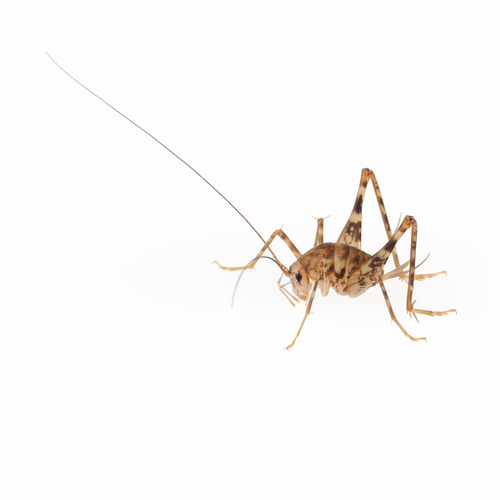


Cave crickets, also known as camel crickets or spider crickets, are a common household nuisance often found in damp, dark spaces like basements, crawlspaces, and garages. These insects are prevalent in homes across New Jersey, and once a colony is established, they can be persistent and challenging for homeowners to eradicate. They often nest in concrete cinderblocks or foundation cracks, providing them with the necessary water and access to food sources like wood, fungi, and other insects. They may even feed on fabrics such as carpets, towels, and curtains.
Outdoors, and cave crickets typically live in moist environments beneath stones, railroad ties, woodpiles, and other debris. Tall grass, dense ivy, caves, and holes in the ground are also common locations to find them. But once in your home they will tend to stay in the basements and will feed on any cellulose material including wood or the paper in the sheetrock.
While they pose no direct harm to humans, their presence can be unsettling due to their appearance and jumping behavior. This article provides an overview of effective pest management and control methods to help you deal with cave cricket infestations.
Understanding Cave Crickets
Cave crickets are nocturnal insects that prefer dark, damp, and cool environments. They are typically brown, wingless, and possess large hind legs for jumping. Cave crickets are omnivorous scavengers, feeding on a variety of materials such as decaying plants, fungi, and even other insects.
Pest Management Strategies
Reducing moisture and humidity: Cave crickets thrive in damp environments. Use dehumidifiers, fans, or proper ventilation to lower humidity levels in affected areas.
Removing potential hiding spots: Eliminate clutter, piles of leaves, and other debris that can serve as harborages for cave crickets.
Sealing entry points: Inspect your home for any cracks, gaps, or openings that might be serving as entry points for cave crickets, and seal them with caulk, foam, or other appropriate materials.
Control Methods
Sticky traps: Set up sticky traps or glue boards along walls, in corners, and near potential entry points to capture and monitor the cave cricket population. Replace the traps regularly to maintain their effectiveness.
Insecticides: If the infestation persists, consider using a residual insecticide labeled for cave cricket control. Spray the insecticide along baseboards, in cracks and crevices, and around potential entry points. Always follow the manufacturer's instructions for proper use and safety precautions.
Professional help: If the infestation is severe or difficult to control, consult a licensed pest control professional to help you eliminate the problem.
By implementing a combination of pest management strategies and control methods, you can effectively deal with cave cricket infestations in your home. Regular inspection, maintenance, and monitoring can help prevent future infestations and keep these unwelcome pests at bay.